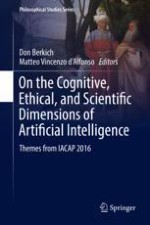2019 | OriginalPaper | Buchkapitel
7. A Software-Inspired Constructive View of Nature
verfasst von : Russ Abbott
Erschienen in: On the Cognitive, Ethical, and Scientific Dimensions of Artificial Intelligence
Aktivieren Sie unsere intelligente Suche, um passende Fachinhalte oder Patente zu finden.
Wählen Sie Textabschnitte aus um mit Künstlicher Intelligenz passenden Patente zu finden. powered by
Markieren Sie Textabschnitte, um KI-gestützt weitere passende Inhalte zu finden. powered by
Abstract
TheSaying thatxreduces toytypically implies thatxis nothing more thanyor nothing over and abovey.
y to which an x reduces consists most often of x’s components. But virtually nothing can be reduced if to be “nothing more than” or “nothing over and above” its components means to have no properties other than those of its components, individually or aggregated. An atom has properties other than those of its quarks and electrons. A protein, a biological cell, and a hurricane—not to mention such man-made entities as houses, mobile phones, and automobiles—all have properties over and above their components. The properties of most entities depend on both those of the entity’s components and on how those components are put together. (That would seem obvious, but perhaps it’s not.)